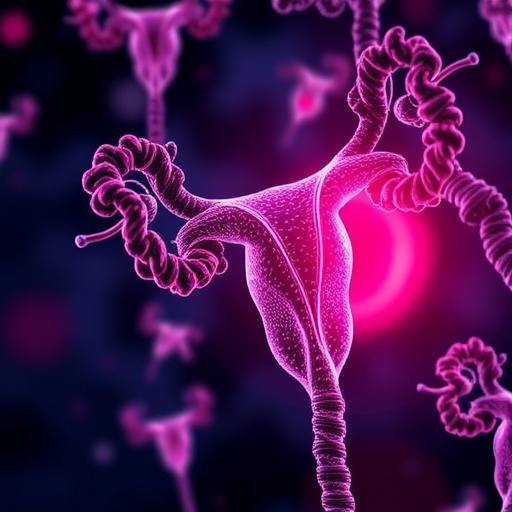June 6, 2018 – Parents have been reading–and sharing–alarming reports of children who died or nearly died due to "dry drowning" over the past year. However, the use of that incorrect, nonmedical term has contributed to confusion about the true dangers of drowning in children and led to serious and fatal conditions being ignored after a "dry drowning" diagnosis was made, according to a special report in the June issue of Emergency Medicine News, published in the Lippincott portfolio by Wolters Kluwer.
Emergency physicians Andrew Schmidt, DO, MPH, Justin Sempsrott, MD, and Seth Collings Hawkins, MD, seek to correct the myths and misinformation surrounding "dry drowning" while outlining a rational approach to managing drowning-related emergencies. Two additional articles draw attention to the rising risk of drowning in older swimmers and the role of cardiac events in immersion incidents.
'Drowning' Deaths May Result from Other Causes
Emergency Medicine News also published an article by Drs. Schmidt, Sempsrott, and Hawkins last summer commenting on the highly publicized case of a Texas boy who died a week after an incident where a wave crashed over him while he was playing in shallow water. (http://bit.ly/EMN-Drowning.) "Initial reports blamed his death on 'dry drowning,' which started a media frenzy that sent panicked parents to have their children checked after inhaling water," the authors wrote. Some news reports used other inaccurate, medically discredited terms such as "secondary drowning" or "near-drowning."
But the child didn't die of drowning; an autopsy identified the cause of death as recurrent myocarditis, or an inflammation of the heart muscle. Unfortunately, few news stories provided corrected information about the real cause of death, and subsequent social media posts spread more alarm by continuing to offer signs and symptoms of "dry drowning."
"Some downplay the need for precise terminology, but words matter when describing something like drowning," the emergency physicians write. They note the true medical definition of drowning: "respiratory impairment from submersion or immersion in liquid," leading to reduced oxygenation (hypoxia). Their article includes concise recommendations for emergency management of drowning, emphasizing strategies for increasing oxygenation and deciding which children need to be observed or admitted to the hospital.
But one thing the authors make clear: Dry drowning does not exist. Drowning as a process can be mild, moderate, or severe with fatal or nonfatal outcomes, and drowning deaths do not occur due to unexpected deterioration days or weeks later with no preceding symptoms.
The recommendations highlight symptoms requiring medical attention in children or adults after water inhalation, immediate or delayed: difficulty breathing, fast heartbeat, confusion or altered mental state, low body temperature, or fever. The authors recommended in last year's article that patients seek care "if symptoms seem any worse than the experience of a drink going down the wrong pipe at the dinner table or severe coughing that does not resolve in minutes."
Drowning risk isn't limited to children or inexperienced swimmers, according to an article by Tom Griffiths, EdD, of the Aquatic Safety Research Group, and colleagues. Drowning deaths have decreased in recent years in all age groups except adults aged 45 to 84, in part reflecting the popularity of swimming as a form of exercise for middle-aged and older adults.
Dr. Griffiths and colleagues cite cases of drowning or death in older swimmers that resulted from heart attacks or other medical events occurring in the water. The authors offer advice for older swimmers, including asking their doctor whether swimming is an appropriate exercise for them, swimming with a buddy, and not swimming too long or too hard. They also remind lifeguards to stay alert when protecting older swimmers.
Paddy J. Morgan, MD, of North Bristol NHS Trust, and Michael J. Tipton, PhD, of the University of Portsmouth, UK, report further evidence in a third article that cardiac events may be the true cause of some deaths attributed to drowning. Water inhalation may occur as a complication in swimmers who experience cardiac events, or immersion may cause heart rhythm abnormalities (cardiac arrythmias).
The authors discuss the complex interacting factors, or autonomic conflict, that may contribute to cardiac events in response to immersion, especially during the strain of competitive or challenging swimming events like triathlons and during popular internet challenges such as extreme breath-holding. Drs. Morgan and Tipton believe the concept of autonomic conflict has important implications for preventing, diagnosing, and treating drowning or immersion deaths.
###
Click here to read "Special Report: The Myth of Dry Drowning Remains at Large."
DOI: 10.1097/01.EEM.0000535015.19364.32
About Emergency Medicine News
A news magazine for the nation's 41,000 emergency physicians, Emergency Medicine News provides breaking coverage of advances, trends, and issues within the field, as well as clinical commentary by Editorial Board Chairman James R. Roberts, MD, a leader in the specialty. The news magazine features comprehensive special reports, illuminating profiles, and dynamic editorials.
About Wolters Kluwer
Wolters Kluwer is a global leader in professional information, software solutions, and services for the health, tax & accounting, finance, risk & compliance, and legal sectors. We help our customers make critical decisions every day by providing expert solutions that combine deep domain knowledge with specialized technology and services.
Wolters Kluwer, headquartered in the Netherlands, reported 2017 annual revenues of €4.4 billion. The company serves customers in over 180 countries, maintains operations in over 40 countries, and employs approximately 19,000 people worldwide.
Wolters Kluwer Health is a leading global provider of trusted clinical technology and evidence-based solutions that engage clinicians, patients, researchers and students with advanced clinical decision support, learning and research and clinical intelligence. For more information about our solutions, visit http://healthclarity.wolterskluwer.com and follow us on LinkedIn and Twitter @WKHealth.
Media Contact
Connie Hughes
[email protected]
646-674-6348
@WKHealth
http://www.lww.com
http://dx.doi.org/10.1097/01.EEM.0000535015.19364.32




